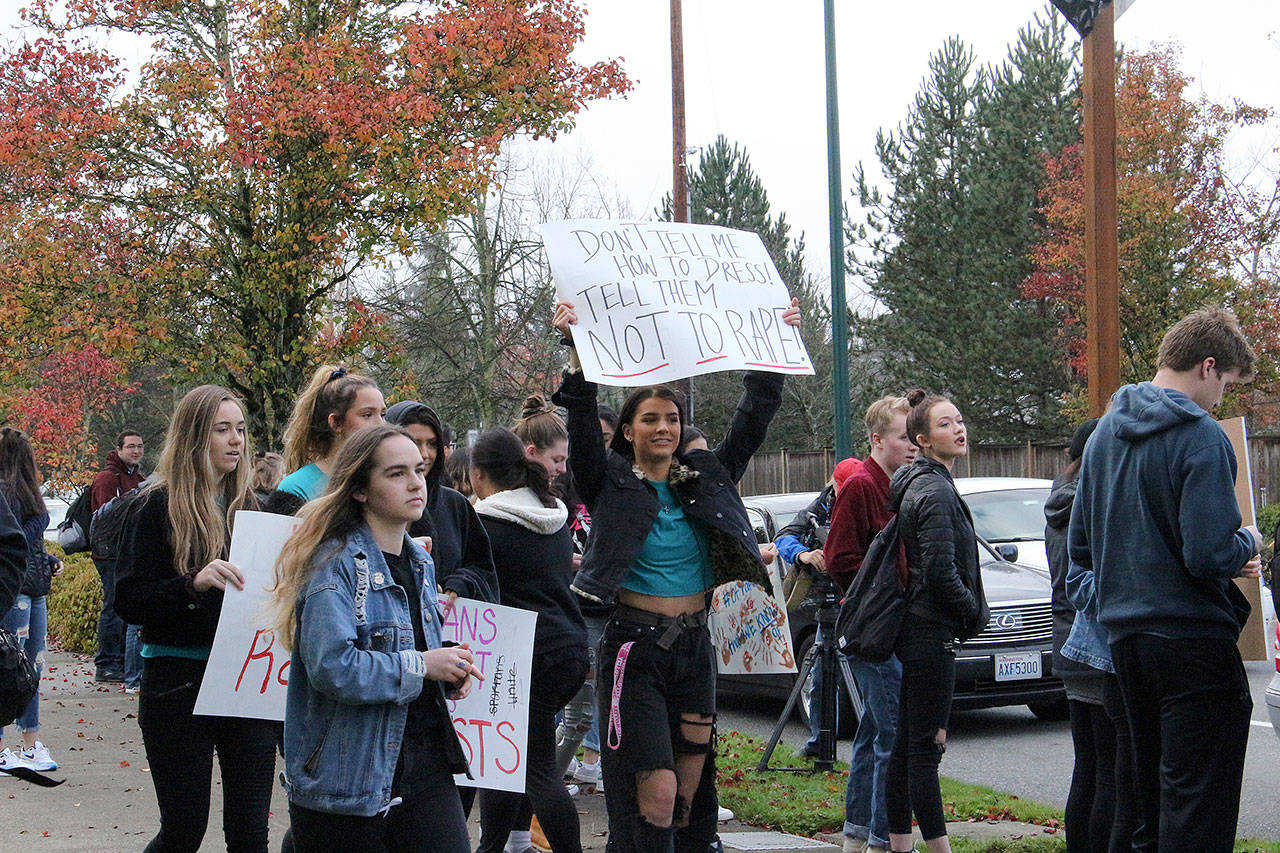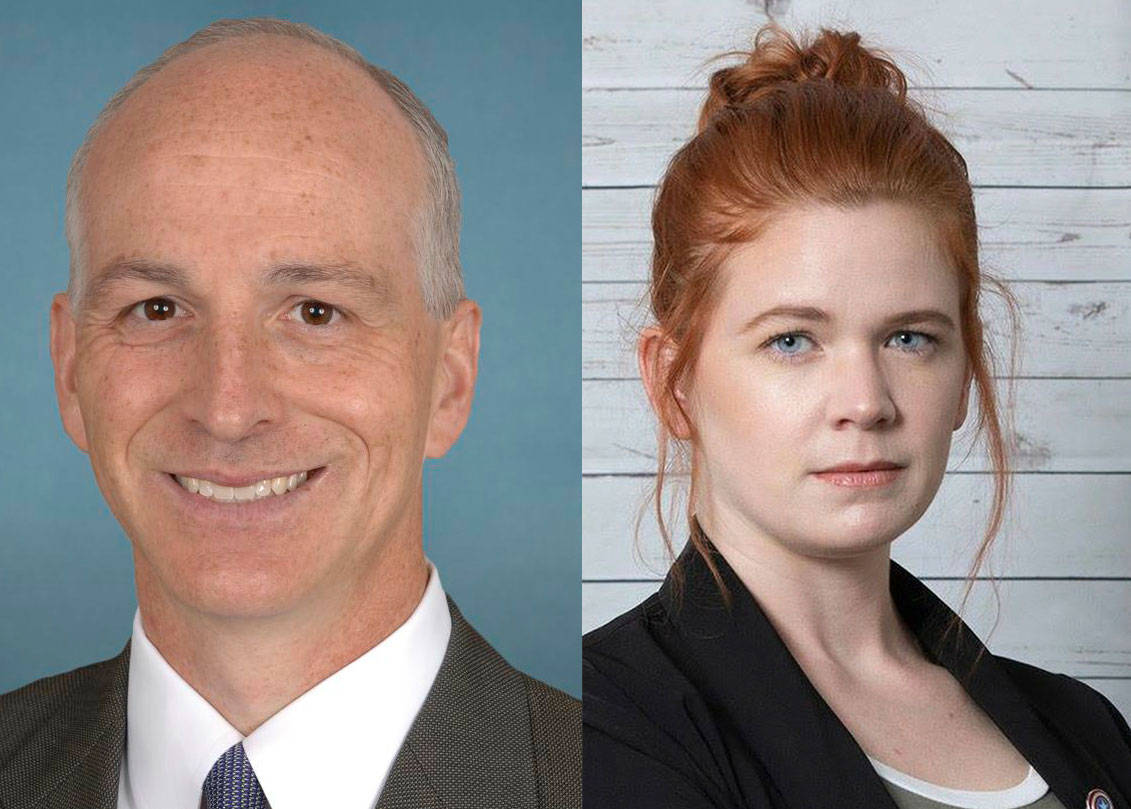Thursday, March 27
Salt Horse
Usually at NWFF you’re tucked into a cozy seat in one of the screening rooms, eating popcorn and watching a movie. But for Color Field, the latest project in the venue’s “Live at the Forum” series, dance is wherever you find it. Choreographers Corrie Befort and Beth Graczyk and composer Angelina Baldoz, collectively known as Salt Horse, will be dancing throughout the building in a form of “kinetic architecture.” The work jumps off from the intensity of abstract expressionist artists like Helen Frankenthaler and Arshile Gorky, they say, intended to translate those visual textures into human activity. (Through Sat.) Northwest Film Forum, 1515 12th Ave., 267-5380, nwfilmforum.org. $12–$15. 8 p.m.
SANDRA KURTZ
Seattle Symphony
Probably the most decisive indication that the Ludovic Morlot Era had begun for the Seattle Symphony was his performance, early in his first season, September 2011, of the explosive Ameriques by Edgard Varese (1883–1965), whose in-your-face delight in pure sound-as-sound did as much as any composer to yank music out of the 19th century and into new realms still being explored. Morlot and the orchestra will return to Varese this weekend, playing his 1954 Deserts. It opens with chimes, and the clangorous resonance of bells seems to pervade this work for stringless ensemble; there’s very little of the hazy or soft-edged here, quite a bit of the incisive and penetrating. (Deserts’ four movements were composed, but are not always performed, with three tape interludes, to be omitted here; they’re fun to hear, if a bit dated in their space-agey, radio-transmission-from-Neptune evocativeness.) As a measure of the importance Morlot grants the French avant-gardist (a composer Gerard Schwarz never touched), Deserts is one of the three pieces the SSO’s bringing to Carnegie Hall in May, with Debussy’s La mer (also heard on this weekend’s concerts) and John Luther Adams’ Become Ocean, premiered memorably last June. (Desert, sea, ocean—get it?) Tonight, the third piece joining Varese and Debussy is Dvořak’s Cello Concerto, 35 patience-trying minutes capped by four glorious ones; still, I’ll leap at any chance to hear the SSO’s fantastic first cellist Efe Baltacıgil. (Also 8 p.m. Sat.) Benaroya Hall, 200 University St., 215-4747, seattlesymphony.org. $19–$127. 7:30 p.m.
GAVIN BORCHERT
zoe | juniper
Choreographer Zoe Scofield and visual artist Juniper Shuey have been very busy. After crafting in-progress works and doing several residencies, their company zoe | juniper will now premiere BeginAgain, the culmination of several years of work. In 2012, they created several “studies,” not your typical stage performances. They held dance installations—all involving audience participation—at Velocity Dance Center, the Frye, and even a private home in Madrona. Although each of their works is always abstract and complex, they tread a signature line every time: The pair meshes Scofield’s contorted balletic affinities with Shuey’s kaleidoscopic visual-art installations. Typically, Scofield’s fervent choreography is a hearty mix of the rigorousness and grace of ballet and the freedom of contemporary dance. She often adds peculiar movements reminiscent of postmodern dance theater. Shuey then generally shapes the dance with his sculptural props and video projections of dancing bodies. Yet for BeginAgain, they’ve turned their process around: Scofield is now taking her turn responding to Shuey’s installed projections. It’s going to be a fresh beginning. (Through Sun.) On the Boards, 100 W. Roy St., 217-9886, ontheboards.org. $20. 8 p.m.
IMANA GUNAWAN
Friday, March 28
Raising Arizona
Poor, dumb Texas jailbird Nicolas Cage is just too weak, or too lovestruck, to resist the maternal edicts of ex-cop Holly Hunter in the Coen brothers’ 1987 kidnapping comedy. My three favorite scenes in the movie involve variously textured surfaces. The first is when the Dobermans go skittering and careening on a supermarket’s slick linoleum floors while chasing diaper-thievin’ Cage. The second is when he raises his fists overhead in the trailer-home brawl and scrapes his knuckles on the popcorn ceiling. The third is when he claws his fingernails into the dirt while being dragged from beneath a car by the unforgettably evil biker Randall “Tex” Cobb. It’s slapstick, but the Coens understand that for comedy to work, it has to hurt. But in Raising Arizona (only the Coens’ second film), Cage’s dim, sweet felon takes all the abuse because he’s so in thrall to the fierce, child-hungry Hunter. Or, as he says, “I’m in dutch with the wife.” Rated PG-13. (Through Wed.) Central Cinema, 1411 21st Ave., 686-6684, central-cinema.com. $6–$8. 9:30 p.m.
BRIAN MILLER
Seattle Vice
When a new cabaret show is directly inspired by a book by our own Rick Anderson, you can be damn sure we’re going to claim all the credit. Published in 2010, Seattle Vice follows SW cover boy Frank Colacurcio (1917–2010), he of the famous “Strippergate” scandal, and other scoundrels, lowlifes, criminals, and eccentrics. Anderson’s dark and darkly funny alternative history is also rooted in reporting he did with The
Seattle Times and the Post-Intelligencer. In a real sense, he remembers the good old bad old days, when cops, crooks, and reporters all tolerated a certain degree of mutual corruption. Someone who does not remember that era is Mark Siano, one of the stars—and co-creator, with Opal Peachey—of this new musical revue, set mainly in 1965 (but with a third act in the post-reform ’70s). “The book was definitely an eye-opener,” says Siano. “Before then, I was mostly interested in the music and style of that era, when the Vegas lounge singers became pop singers.”
Appropriately, Siano plays Gil Conte in the show, a lounge singer who became Colacurcio’s bag man for bribes and proceeds from the smut trade. Yes there was prostitution behind the scenes, but nightclubs were also social spaces filled with music, dancing, booze, and cigarette smoke. The notion of adult entertainment meant something quite different back then, says Siano: “The ’60s sounded so fun; we were a little bit looser then, a little bit freer.” And Seattle was booming with postwar prosperity, the World’s Fair, Elvis, and the Beatles. Dull suburban propriety was a decade away. Today, with a bar in ACT’s Bullitt Cabaret and audience dancing encouraged during Seattle Vice, Siano says, “We wanted to create a space that feels like one of those old clubs.” New yet retro-sounding songs are interspersed with the rise and fall of Colacurcio’s T&A empire—“It’s probably half fiction, half real,” says Siano. This stage version of Seattle Vice is all about melody and comedy; it’s not meant to be serious history.
Yet, says Siano somewhat ruefully, “Frank was a man who really believed he was giving us what we wanted, but in some ways he ruined adult entertainment.” With his excesses, and the revelation of police and political graft, came a new raft of laws regulating strip clubs and bars. Good old risque fun got legislated out of existence. (Through April 19.) ACT Theatre, 700 Union St., 292-7676, acttheatre.org. $20. 21 and over. 8:30 p.m.










